Affiliate disclosure: This post may contain affiliate links. Please see our Privacy Policy.
The best egg laying chickens will keep your egg basket full, and many of these breeds are perfect for beginners. These chickens lay the most eggs, and some lay colorful eggs too!

With the price of eggs these days, it’s no wonder that backyard chickens are becoming more common. Whether you live on a tiny lot in the suburbs or way out in the country, these are by far the best egg laying chickens.
Choosing an Egg Laying Chicken Breed
Choosing the perfect egg-laying chickens hinges on a few key considerations. Some features may be more important to you than others, so it’s important to think about them before you go any further.
Egg Color
Egg color can vary, depending on the chicken breed you choose. If you prefer white, brown, green, blue, or rose-colored eggs, you can choose the breed that provides those options.
Egg Quantity
Some chickens lay far more eggs than others, and if you want the highest yield, you can focus on a breed that lays nicely. But you may have to choose between color and quantity, depending on which is more important to you.
Temperature Hardiness
Cold and heat hardiness can ensure you don’t lose your flock due to drastic temperature changes. Cold-hardy chickens are best for places where temperatures drop below freezing, and heat-hardy birds fare well in areas where temperatures soar.
Bantam Eggs
Bantam chickens are small, at about a third or a quarter the size of a standard chicken. Likewise, their eggs are small, cute, and sought-after. Bantam eggs have yolks about the same size as a regular egg, but with much less white, so the yolk-to-white ratio is different than a regular egg.
Best Chicken Breeds for Eggs
Egg layers can have various attributes, including docile dispositions, high-production egg yields, colorful eggs, and Bantam breeds.
Here are some facts about each option as you try to find your best breed.
I’ve broken them down into categories, with the three best breeds in each:
- Best Egg Laying Chickens for Beginners – Dependable layers, easy to handle, docile and friendly.
- Chickens that Lay The Most Eggs – These lay more eggs than any other chicken, but they may not be as friendly or easy to raise.
- Chickens that Lay Colorful Eggs ~ The perfect breeds for a colorful egg basket.
- Best Egg Laying Bantam Chickens ~ At about 1/4 the side of regular chickens, these small chicken breeds are perfect for small backyard coops.
Best Egg Laying Chickens for Beginners
Having a healthy flock of egg-laying chickens is important. But the experience is even better when those chickens are also friendly, docile, and pet-like. We’ve all seen videos of chicken owners being chased by aggressive roosters, but you should know that not all roosters are hateful or mean. In fact, some can be tamed and will follow you and your kids around the yard like puppies.
Here are a few of them.
Orpington
Orpingtons are some of the friendliest chickens, compatible with many different breeds, but they are very susceptible to bullying by aggressive breeds. They’re quiet and make excellent suburban backyard chickens, often fussing for your attention and love.
The Orpington will be a fantastic addition if you’re looking for a family-friendly chicken. They lay around 200 to 280 eggs a year in ideal conditions.
- Temperament: Docile, family-friendly, and relaxed
- Size: Large, eight to ten pounds
- Eggs Per Year: 200 to 280
- Egg Size: Medium to large
- Egg Color: Light brown
- Lifespan: Eight years or more
- Time To Maturity: 20 to 22 weeks
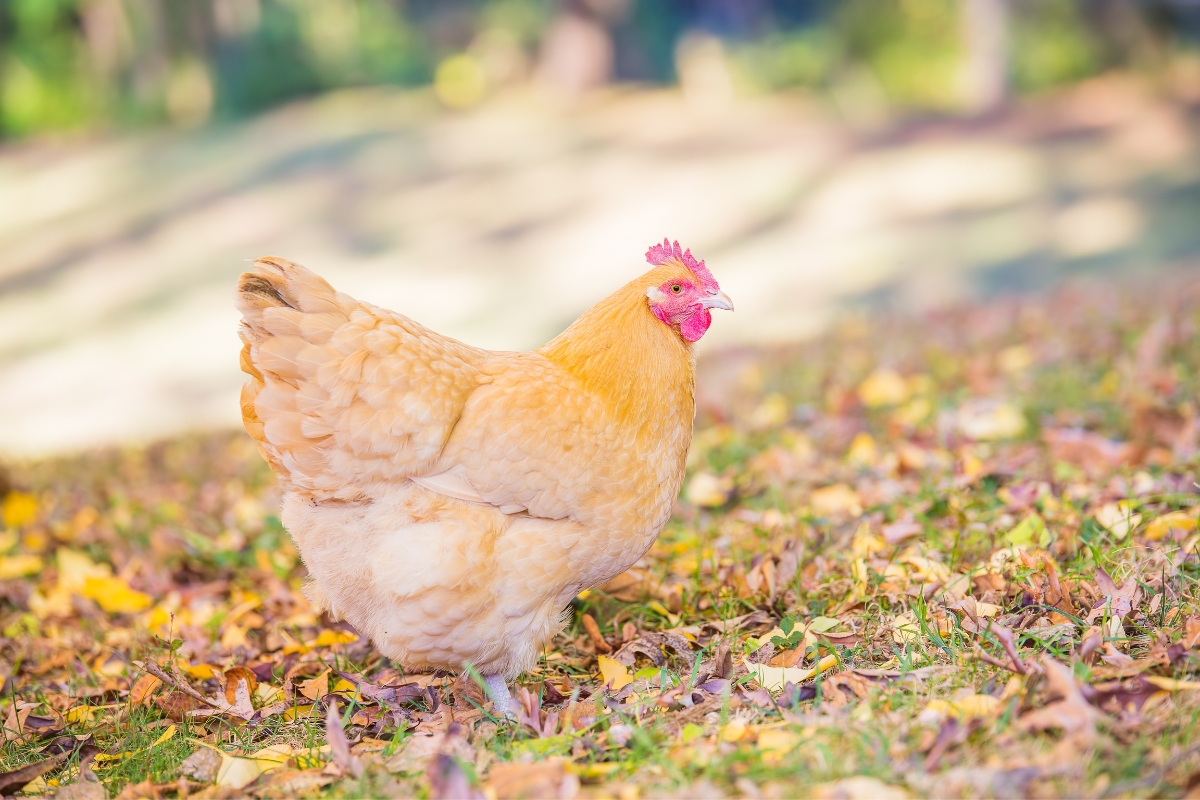
Easter Egger
The Easter Egger isn’t a purebred breed, but they are a fantastic addition to your flock. They’re friendly and assertive and come in extensive colors like their eggs.
These hybrid birds are healthy and robust and do well in climates ranging from snowy to desert. Poultry Associations don’t recognize them, but they’ll become a beloved part of your family.
You can expect 200 to 250 eggs a year in ideal conditions.
- Temperament: Friendly, curious, vibrant
- Size: Medium, four to five pounds
- Eggs Per Year: 200 to 250
- Egg Size: Large
- Egg Color: Varies widely (Whatever color your hen lays will be her egg color. Each can lay a different color.)
- Lifespan: Four to seven years
- Time To Maturity: 20 to 24 weeks
Sussex
These beautiful chickens, first bred in Sussex, England, are easy to handle, love to forage, and are known to go broody. However, as an England native, they are cold hardy and will scratch and forage, no matter the weather.
They’re big enough to be dual-purpose birds, offering fine table fare, but you may not want to part with them once they’re tamed.
They lay around 200 to 250 eggs a year in ideal conditions.
- Temperament: Docile, confident, curious foragers
- Size: Medium to large, six to eight pounds
- Eggs Per Year: 200 to 250
- Egg Size: Large
- Egg Color: Tan to Brown
- Lifespan: Five to eight years
- Time To Maturity: 16 to 20 weeks
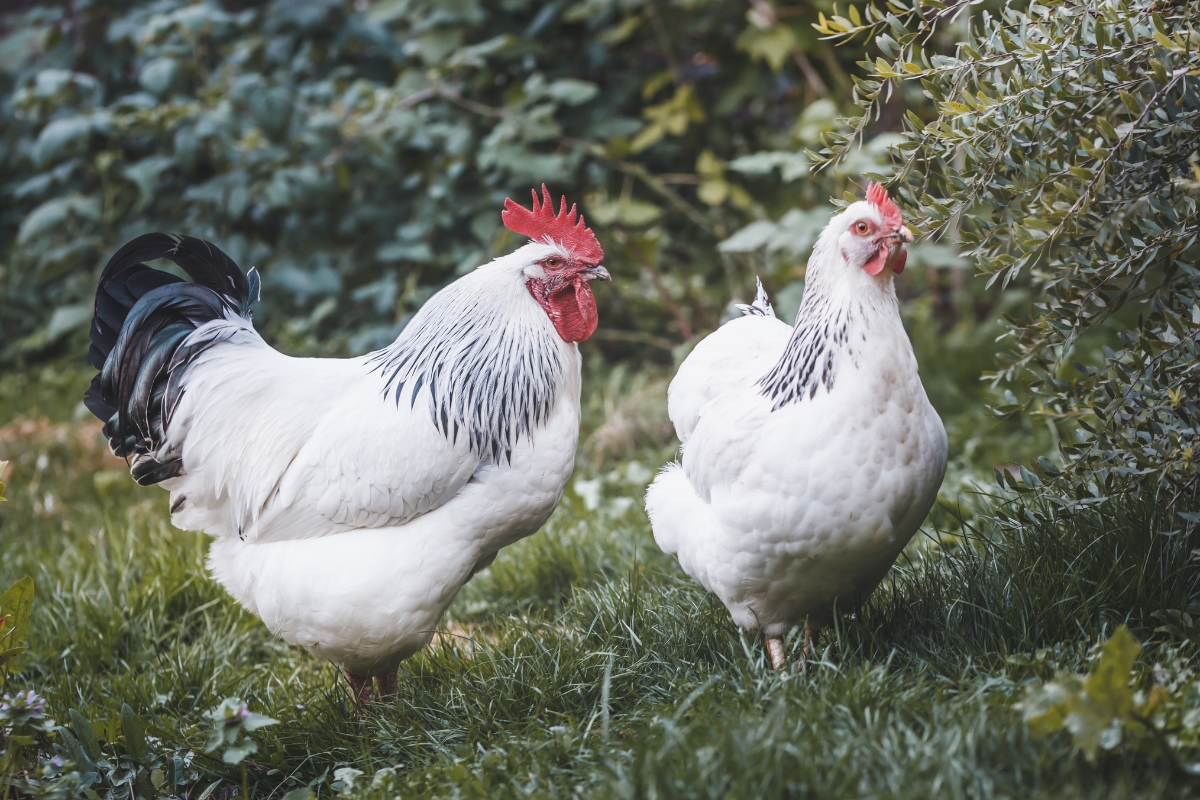
Chicken that Lay the Most Eggs
If you’re looking for chickens that lay the most eggs, you’re not alone. As the price of eggs continues to soar, it’s worth your time to invest in chickens that offer a high yield of eggs for the feed you give them.
These three breeds provide plenty of eggs and other excellent features too.
White Leghorn
Leghorns have reputations as excellent egg layers. But for beginners, we recommend a coop or area with a covered top because they tend to be flighty and hard to catch. They fly very well and enjoy perching in high places to keep an eye out for predators.
It may not be impossible, but Leghorns aren’t likely to be turned into pets. But they are a charming breed that isn’t known to go broody.
They lay around 280 to 300 eggs a year in ideal conditions.
- Temperament: Nervous, easy to scare, flighty
- Size: Medium, about five to six pounds
- Eggs Per Year: 280 to 300
- Egg Size: Large
- Egg Color: White
- Lifespan: About six years old
- Time To Maturity: 16 to 17 weeks
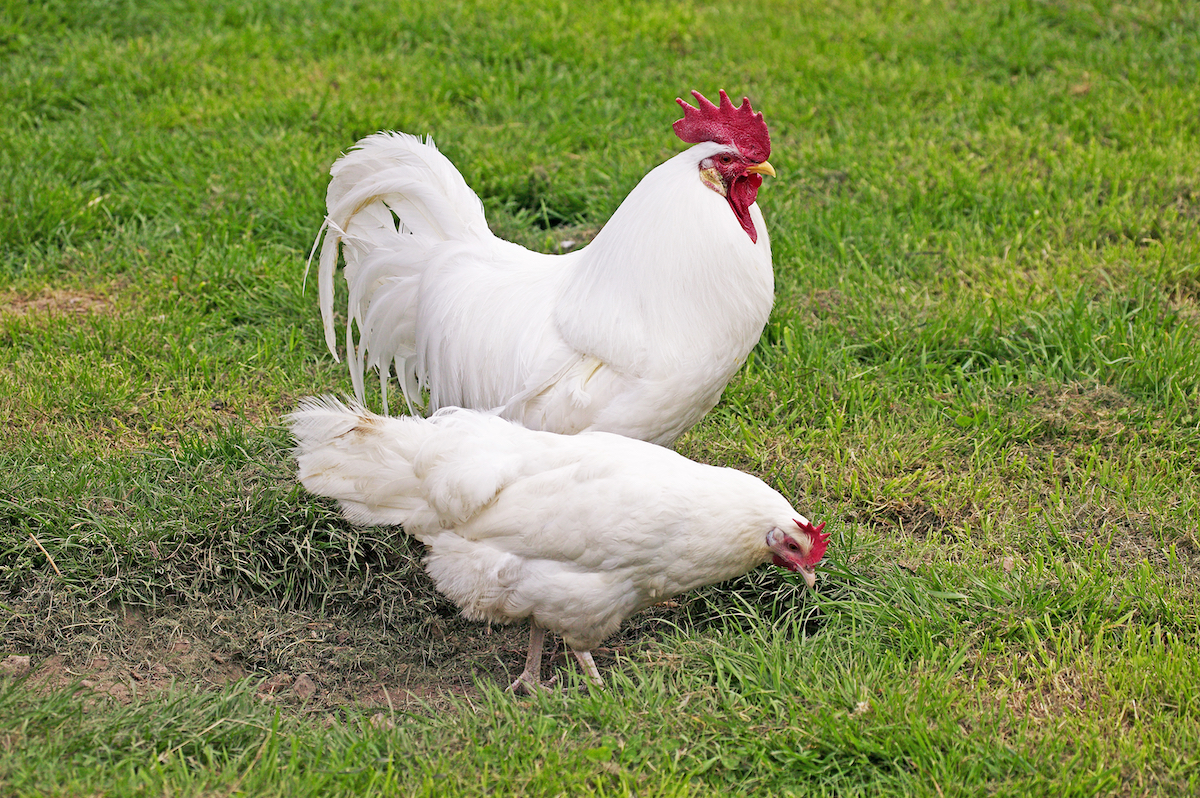
Barred Rock (or Plymouth Rock)
These beautiful birds are terrific foragers and free rangers and lay prolifically. Your neighbors will appreciate that they’re generally quiet, though they do sing the egg song.
They aren’t aggressive or confrontational, but they don’t mind standing their ground if push comes to shove. Be careful with small children around roosters because they will protect their ladies if they feel threatened.
Hens will give you from 280 to 300 eggs a year in ideal conditions.
- Temperament: Friendly, calm, and curious
- Size: Average, six to seven pounds
- Eggs Per Year: 280 to 300
- Egg Size: Large
- Egg Color: Brown
- Lifespan: Six to eight years
- Time To Maturity: 18 to 20 weeks
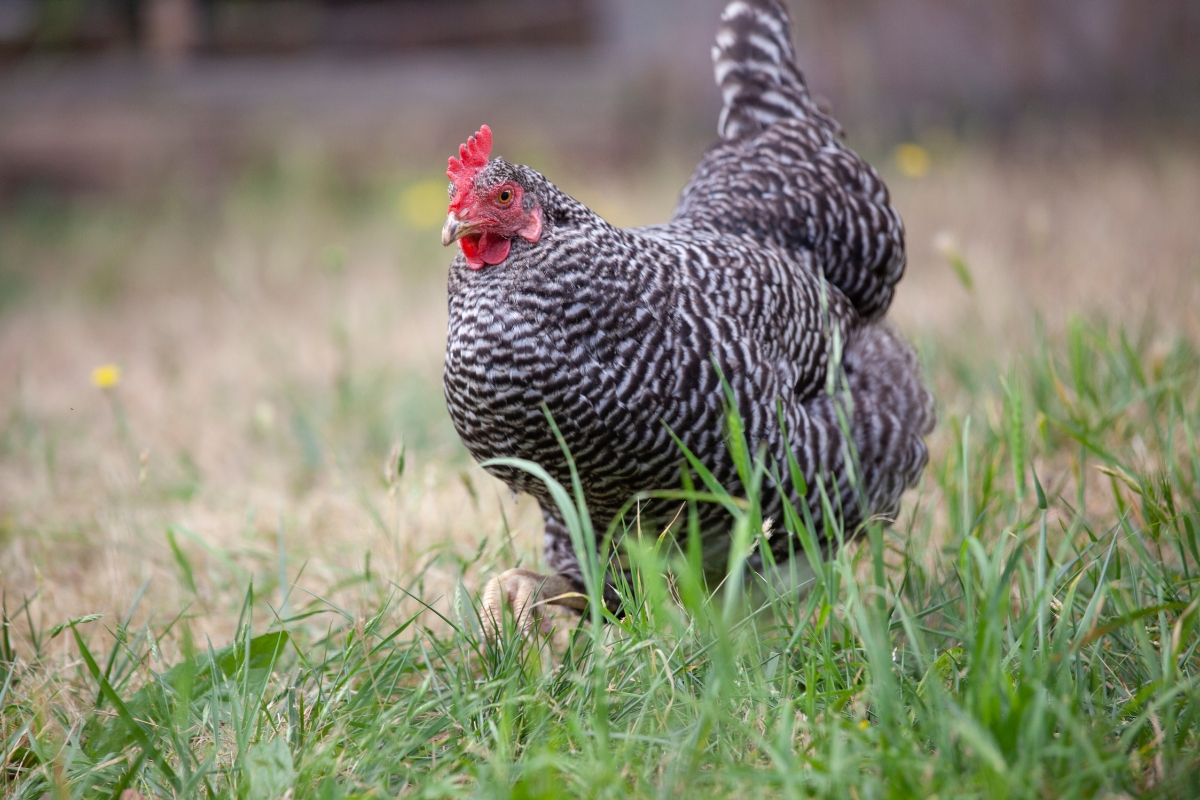
Rhode Island Red
Rhode Island Reds are excellent foragers, but they do very well in penned quarters as well. You’ll love their personality, good health, and resiliency as much as you love the number of eggs they offer.
These hardy foragers are perfect for the beginning chicken enthusiast, but if paired with docile breeds, they can become bullies. So don’t be surprised if they get rowdy and loud, though free ranging can keep them occupied.
They lay around 260 to 280 eggs a year in ideal conditions.
- Temperament: Standoffish, cautious, and sometimes broody
- Size: Average to large, six to ten pounds
- Eggs Per Year: 260 to 280
- Egg Size: Large
- Egg Color: Brown
- Lifespan: Five to six years
- Time To Maturity: 18 to 20 weeks
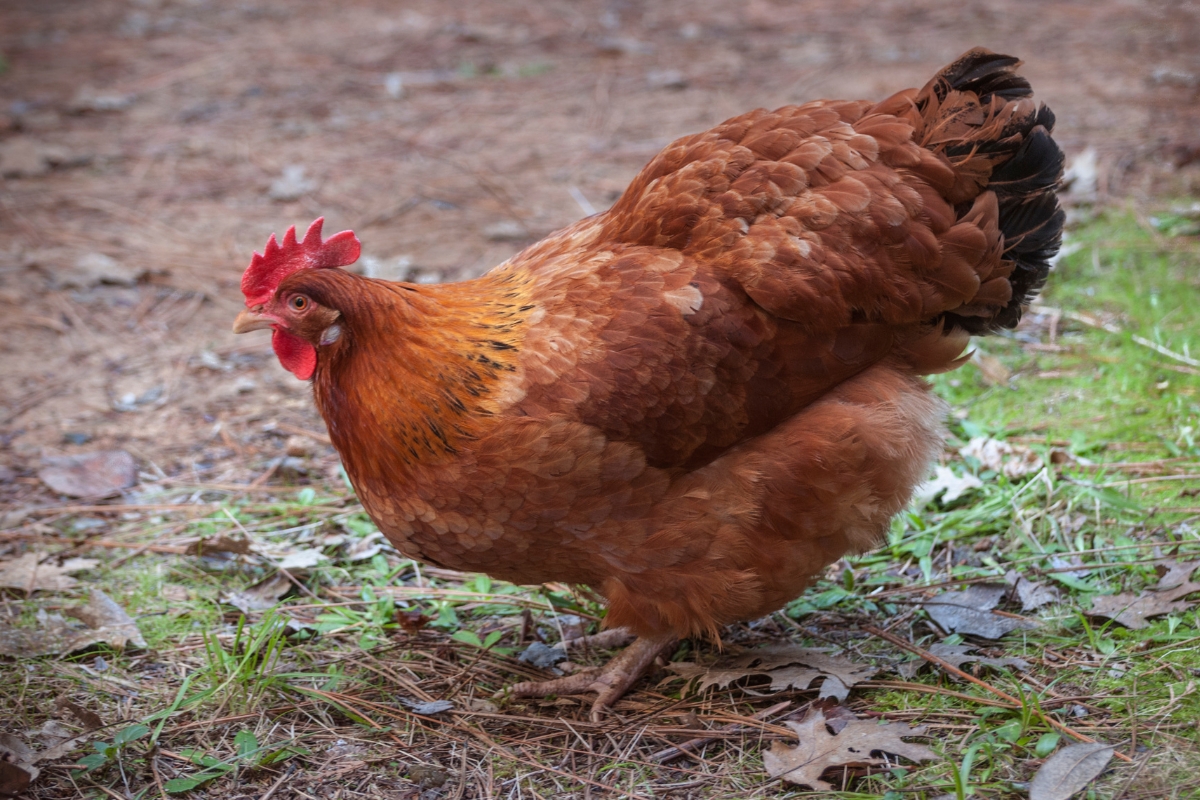
Chickens That Lay Colorful Eggs
If you think white and brown are the only egg colors, we have a surprise for you. Beautiful colored eggs are a joy to find in the backyard chicken pens, and there are several birds that will treat you with them. So, if you’re looking for this option for your flock, here are some breeds to focus on as you search.
Whiting True Blue
This chicken breed is relatively new, established in the 1990s, and is a result of White Leghorn and Ameraucana breeding. While prized for their beautiful blue eggs, they are a perfect combination of pest control and independence.
They will forage and roam with little assistance from their owners, so it’s no surprise that they’re not the perfect companion chicken. However, they make excellent flock birds and treat other chickens with respect.
Each of these birds offers unique coloring and lays around 280 to 300 eggs annually in ideal conditions.
- Temperament: Indifferent
- Size: Average, five to seven pounds
- Eggs Per Year: 280 to 300
- Egg Size: Large
- Egg Color: Blue
- Lifespan: Five to ten years
- Time To Maturity: 20 weeks
Olive Egger
Olive eggers aren’t exactly a ‘breed” because they result from crossing any blue egg layer with any dark brown egg layer. The result is brownish green to dark-green egg production. Favaucanas, Ameraucanas, and Aruacanas can produce eggs with a greenish tint, but they aren’t considered a true Olive Egger.
Their dispositions depend on the temperament of their parents, so breeding docile breeds will yield a docile Olive Egger.
They’re easy to raise, blend well with an existing flock, and lay 140 to 200 eggs a year in ideal conditions.
- Temperament: Docile, child-friendly, and sometimes broody
- Size: Average, six to eight pounds
- Eggs Per Year: 140 to 200
- Egg Size: Medium to large
- Egg Color: Green to olive
- Lifespan: About eight years
- Time To Maturity: 20 to 22 weeks
Faverolles
Faverolles are excited about everything, nosy, and very talkative. They’ll run to you, especially if they think you have treats, but they really come to love their owners.
They tolerate a lack of free ranging without developing bad habits, but they do love to forage if possible. Also named the French Poodle of the chicken world, these fluffy pink-beaked birds lay around 200 to 240 eggs a year in ideal conditions.
- Temperament: Friendly and gentle but active
- Size: Average, five to seven pounds
- Eggs Per Year: 200 to 240
- Egg Size: Medium to large
- Egg Color: Pink to Rose
- Lifespan: Five to seven years
- Time To Maturity: About 20 weeks
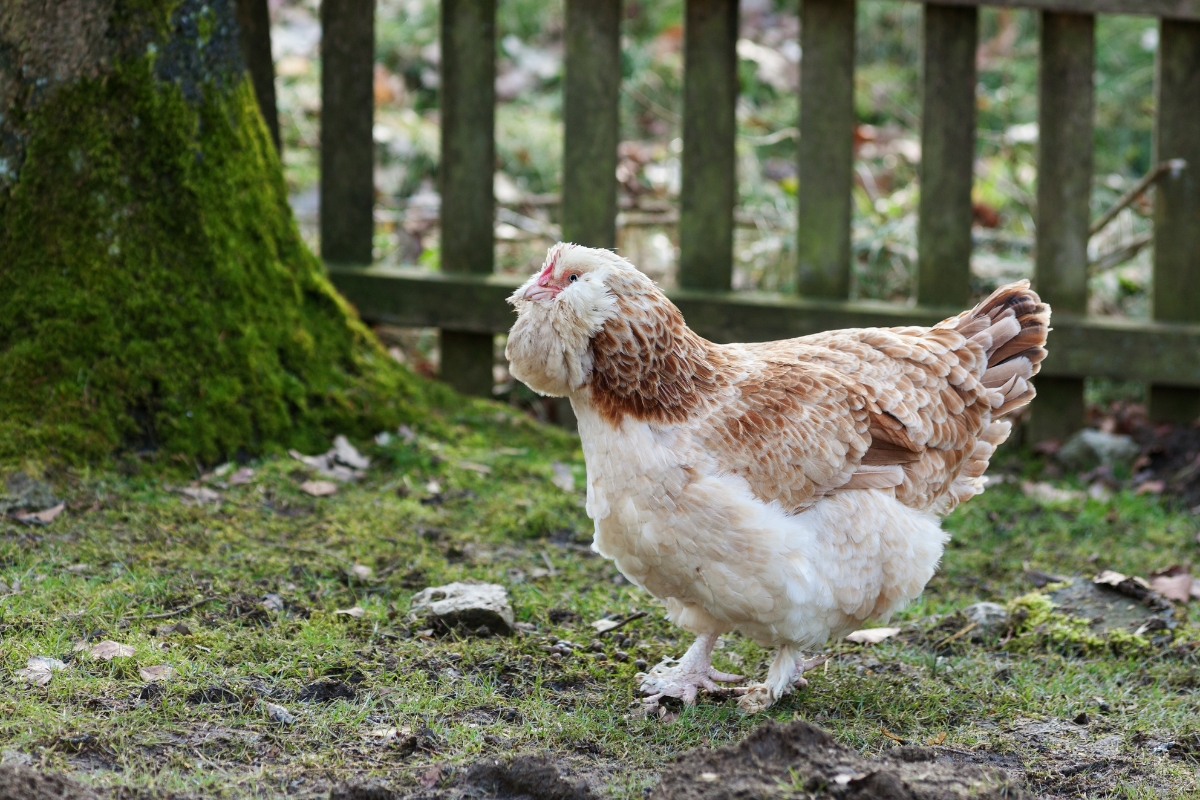
Best Egg Laying Bantam Chickens
Bantams are much smaller than standard sized chicken but can offer an excellent number of small eggs. Some are known to be aggressive, or at the very least, extremely active, while others exhibit a more docile demeanor, making great pets.
Here are three breeds that you’ll love for their personality and egg production.
Bantam Sussex Hybrid
These gorgeous birds are sweet, docile, and very curious, adapting well even to bad weather. They tame easily and can make a perfect pet for your children, preferring to show affection rather than aggression.
When they go broody, they are excellent mothers, even adopting chicks they didn’t hatch. They lay well through the winter, even though they’re late-maturing, laying around 200 eggs a year in ideal conditions.
- Temperament: Friendly, intelligent, and tamable
- Size: Two to four pounds
- Eggs Per Year: About 200
- Egg Size: Small
- Egg Color: Cream to light brown
- Lifespan: Seven to eight years
- Time To Maturity: About 35 weeks or more
Bantam Brahma
These cute, calm birds are a fancy breed that looks the same as the standard-size bird of the same name. They can be hard to find, but it’s a search that’s worth your time. Their curious nature puts them on the outgoing end of the personality spectrum, but they are neither bold nor aggressive.
Standing about six inches tall, these cuties love to forage and free range, but they won’t wander far from home.
They make great pets and lay around 200 to 250 eggs a year in ideal conditions.
- Temperament: Quiet and tame
- Size: One to three pounds
- Eggs Per Year:
- Egg Size: Small
- Egg Color: Light brown
- Lifespan: Five to eight years
- Time To Maturity: 24 to 30 weeks
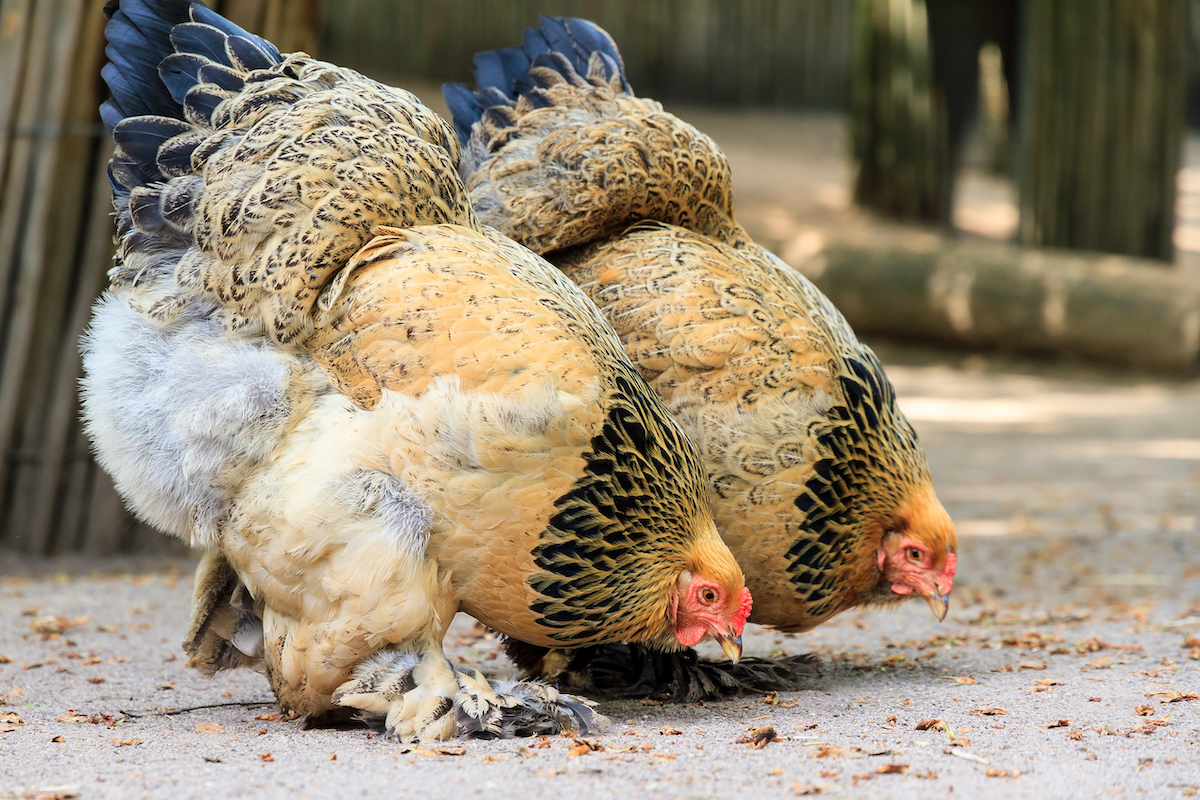
Plymouth Rock Bantam
One of the best Bantam breeds, Plymouth Rock Bantams lay earlier than most and lay plenty of eggs without going broody. They tolerate both heat and cold equally well, are excellent foragers, and offer a docile disposition that makes them an excellent backyard addition.
When it comes to flying, these birds aren’t very good at it, so no worries about confinement. You’ll love their friendly disposition and how much they love to be petted and picked up. They even get along well with other pets.
Expect them to provide 200 to 300 eggs a year in ideal conditions.
- Temperament: Friendly and easy to tame
- Size: One to three pounds
- Eggs Per Year: 200 to 300
- Egg Size: Small
- Egg Color: Brown
- Lifespan: Five to six years (Some have been known to live up to 12 years)
- Time To Maturity: 20 to 24 weeks
Chicken Keeping Guides
Looking for more chicken keeping guides?
- How Much Does it Cost to Keep Chickens?
- Beginner’s Guide to Chicken Egg Colors
- What’s the Difference Between a Duck Egg and a Chicken Egg?
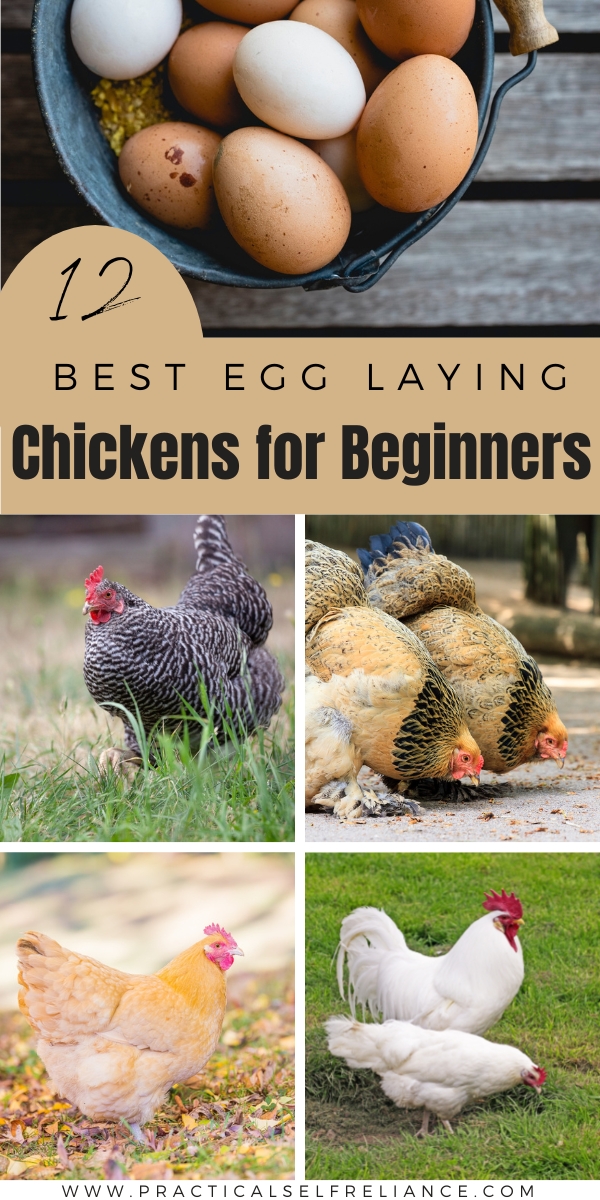

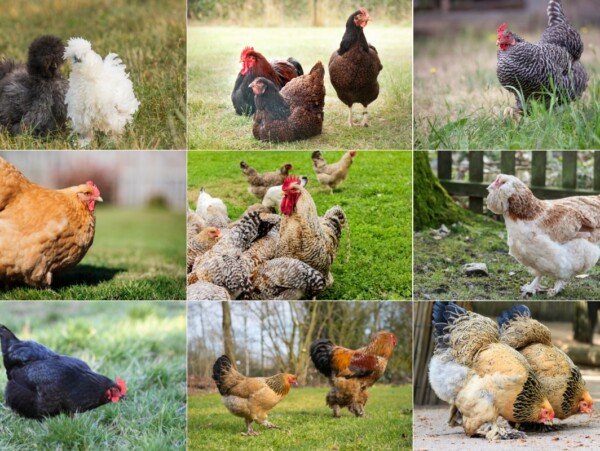
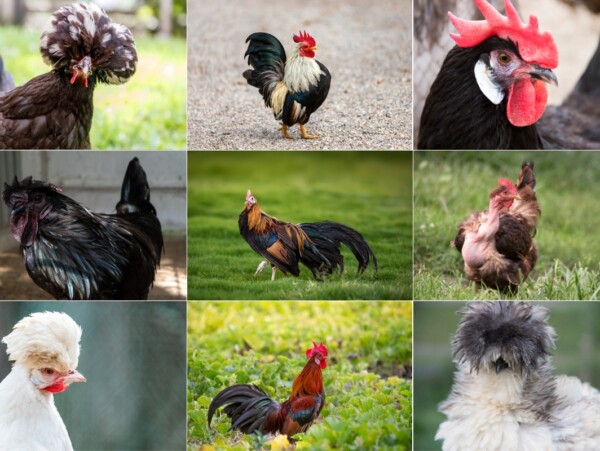
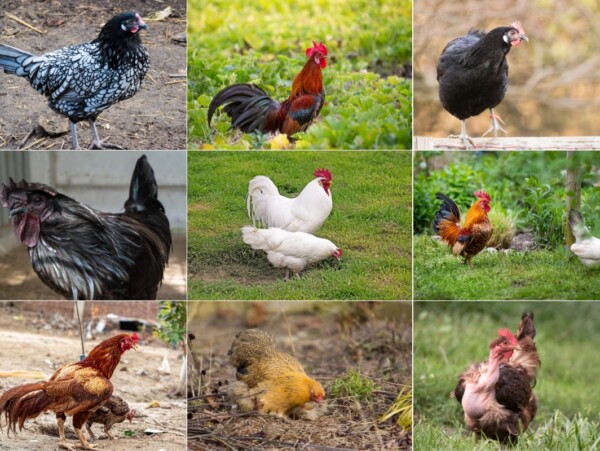










I love, love your postings. I grew up on a 20 acre truck farm in Stockton California. I have had to learn how to farm a small urban property in Olympia Washington. Thank you for all the valuable ideas.
I have successfully grown FROST and RISING STAR PEACH here. Also Muscst grapes, sun Gold tomatoes, and a wide variety of Solanaceae.
My favorite chickens for egg production and good temperament are BLUE AUSTRALOPE and BUFF BRAMA.
I am going to spend next Fall and Winter in NY. I will be traveling to Vermont to visit friends and would love to share some time with you and share what I’ve learned the old fashioned way, trial and error, for. labor saving techniques in growing, maintenance and composting. It’s what I call no-waste sustenance.
Thank you again. Letha White